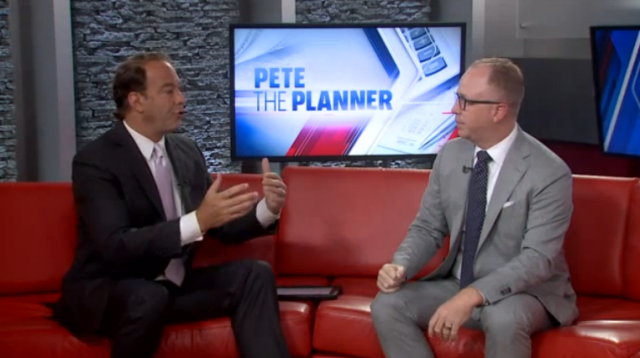Why more people should invest in targetdate funds_1
Post on: 26 Апрель, 2015 No Comment

You know the old saying about how if you can’t beat them, you should join them?
Well, if it’s good advice — and it certainly can be — then a new study would suggest that a lot of people might want to stop what they’re doing with their portfolio and go buy a target-date retirement fund instead.
Last week Openfolio released results of a study of performance from its users that suggests a majority of investors need to either change their investment behaviors or just leave the whole idea of building a portfolio to the pros.
Arpad Benedek/Getty Images Mutual funds portfolio
Openfolio is a free app built to let investors see how their portfolios compare to other people’s, providing a means for sharing ideas and insights the way Wall Street sharpies often shoot stuff around the trading floor. (It’s worth noting investors share everything but the dollar amounts; it’s about portfolio construction — what percentage is invested in various holdings and so on.) The app imports information from the user’s brokerage accounts — so it isn’t cherry-picking an investor’s best or worst transactions — allowing Openfolio officials to do some interesting analytics.
So the firm — which started last year, but has portfolio data going back to 2013 — crunched millions of data points to compare the performance of Openfolio users to the average target-date retirement fund. Comparing performance to a target-date fund instead of an index makes sense for many investors, as life-cycle funds have become the “default” choice in retirement plans for people who don’t actively run their money or make active allocation decisions.
Openfolio’s benchmark number for 2014, therefore, was 7.2%, the average return among the target-date offerings from The Vanguard Group, the world’s largest mutual fund.
That’s not an exceptionally high hurdle, considering that the Standard & Poor’s 500 was up roughly 13.7% or that most more-broadly diversified total stock market funds gained about 12.25% last year.
What Openfolio found, however, is that just 41% of investors beat the target-date fund last year, with 59% failing to keep up. Worse yet, 24% of the investors studied lost money in 2014. Ouch.
In digging deeper into those findings, Openfolio found three primary causes for lagging performance.
According to David Ma, head of business development for the firm, investors who couldn’t keep up with the target-date fund made the following mistakes:
• They went heavily into individual companies, with single-stock risk increasing the volatility in their portfolio. Investors who lost money took on “85% more risk” than those who made a profit (and simply making a profit is a much-lower hurdle than topping the average target-date fund), Ma noted, “but what you are doing when you invest is you are trying to get paid a decent return for the risks you are taking, and the numbers show that’s not happening for the people who are taking on too much risk.”
• They failed to diversify into mutual funds and ETFs and, as a result, lacked broad market diversification.
This is a direct follow-up to the first mistake. The study showed that the investors who lost money in 2014 had more than 70% of their portfolios in individual stocks, compared to something closer to a 50-50 split between diversified funds and single stocks for people who at least ended the year on the plus side.
• They held too much in cash and were, therefore, under-invested. People who made money in 2014 held roughly 11% of their assets in cash, Ma said, while the money-losers had an average cash position of closer to 18%. “That 10% difference of uninvested cash when the market is up 14% in a year can lead to a large difference in returns [for the entire portfolio],” Ma said.
It’s possible that the numbers will vary dramatically as market conditions change and Openfolio gathers more data in the years ahead, but what is more likely to help investors is their own experience, as Openfolio’s research shows that mistakes decline with age, with investors aged 50-plus roughly half as likely to lose money as young beginners under age 25.
Interestingly, a study about financial stress released last week by the American Psychological Association showed that money tensions also decline with age.
Maybe some of that is because investors are opting for the default choices as they age; at the very least, they may be taking more middle-of-the-road strategies, which don’t maximize returns so much as strike a more reasonable balance between risk and reward.
But for investors who are stressing out over their strategy and trying to decide if it works, comparing the complexity of building an asset allocation and making more active decision-making should be weighed against a reasonable default choice, like a target-date fund.
Ultimately, if your portfolio isn’t beating the default, one-size fits-all, no-brainer options, you should either emulate their strengths and eliminate your mistakes, or simplify your life by investing with them.














